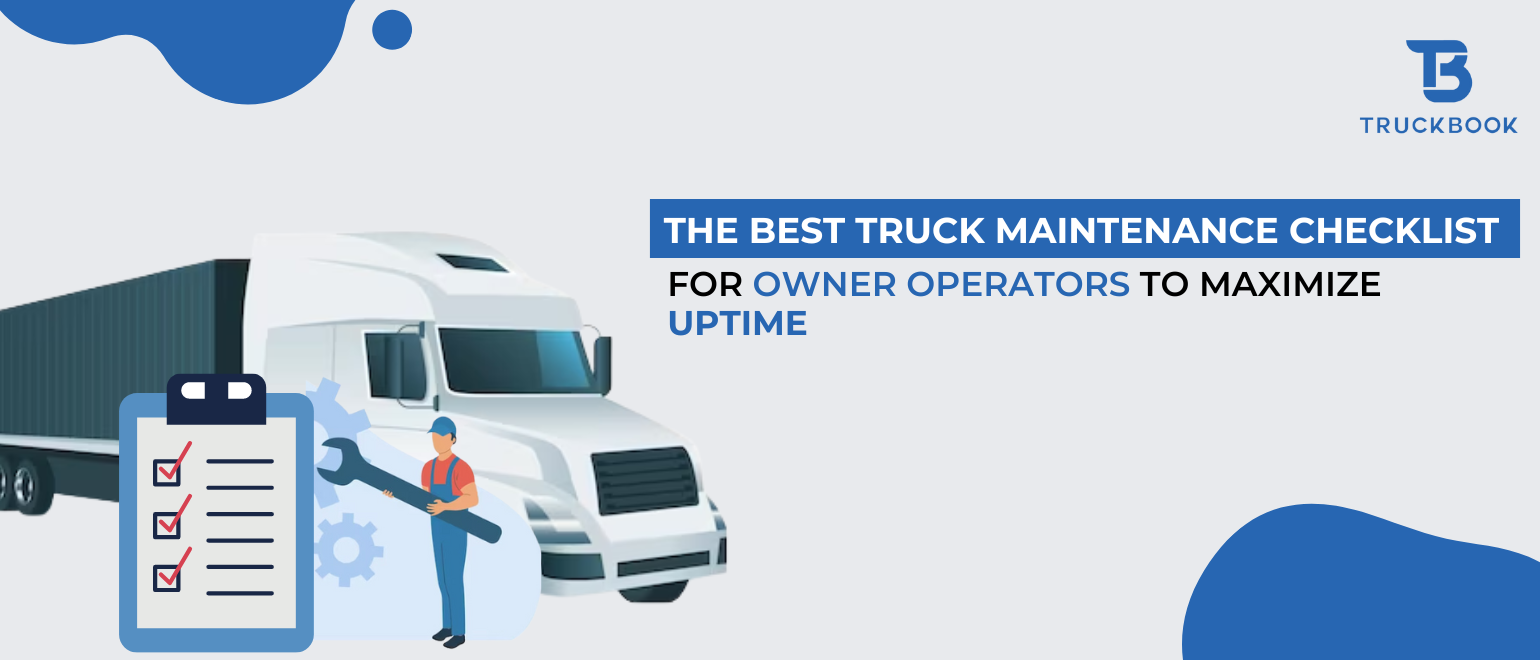We are not surprised if you are worried about the sudden roadside breakdowns and growing maintenance cost. When the average maintenance costs of a truck grew by double digit last year as the technician pay increased.
On average, trucks experience roadside breakdowns about every 42,459 miles, according to the most recent study conducted by American Trucking Associations’ Technology & Maintenance Council and FleetNet America.
But worry not,
There are always ways to cut costs and maximize uptime. We are here to identify the most predictive solutions that allow owner operators to sidestep mounting costs.
With the total cost of operating a truck at about $210,000 annually (or about $1.76 per mile). Which includes repairs and maintenance costs at $0.17 per mile (or 9% of total operating costs), and tires (either new tires or retreading, costing about $0.03-$0.04 per mile (or 2% of total operating costs), it also makes it one of the major areas of scope to cut the significant costs of your trucking business.

However, “Unplanned breakdowns can send your fleets into a tailspin”.
In this case, it’s not unusual if you find it overwhelming to control the growing maintenance bills. But it’s not impossible. While you can’t control the growing technician cost, you can definitely maintain the increasing downtime of your truck and save dollars by investing in a predictive maintenance method upfront.
In one of the recent blogs, we discussed the best fuel cards for owner operators. Continuing with smart expense management ways, in this one we are going to cover the best Fleet Maintenance Checklist For Owner Operators To Maximize Uptime. Let’s start with understanding the importance of implementing scheduled maintenance of a truck.
How Truck Maintenance Allows Owner Operators To Sidestep Repair Cost
Firstly you have to understand, why is your truck breaking down? While shaving some money off the top of the maintenance budget may seem like a reasonable cost-saving measure at first, as an owner operator you should be wary of neglecting your equipment in order to save a few bucks. This technique could easily lead to overlooked issues and roadside breakdowns, which end up costing you far more in the long run.
Implementing scheduled maintenance is undoubtedly preferable than doing nothing and hoping for the best, but using technology to predict problems before they become expensive can reduce the need for reactive maintenance in a manner that more conventional approaches simply cannot.
However, some breakdowns are more common than others.
So, what are the best ways to prevent those breakdowns?
The Most Common Reasons For Breakdown, And What Are The Ways To Maximize Uptime
1. Maintain the Battery:
The most common cause of truck breakdowns is battery malfunction. To avoid this, ensure the batteries are well-charged, clean, and the electrical connections are free from corrosion. Use anti-corrosion spray for better protection.
2. Avoid Locked or Worn-Out Brakes:
Regularly check and maintain the brakes to prevent common issues like cracked discs and worn-out pads or calipers. Follow scheduled service intervals to keep the brakes in good condition.
3. Clean Starter Motor Connections:
Engine malfunctions are often caused by loose or corroded electrical connections in the starter motor. Check and clean these connections regularly to prevent problems.
4. Daily Tire Checks:
Conduct daily inspections of the tires to identify any signs of damage or unusual wear, which could lead to tire blowouts and breakdowns.
5. Inspect for Oil Leaks:
Look for oil leaks, especially from hoses and pipes, which can cause unnecessary standstills. Regularly checking for leaks can help you avoid breakdowns before they happen.
6. Prevent Clutch-Related Issues:
Attend scheduled service appointments to detect and address clutch-related problems caused by worn-out clutch discs or leaking pneumatic hoses. Proper driver training can also help avoid clutch issues when using manual mode.
7. Replace Filters on Time:
Ensure timely replacement of filters, such as fuel filters and water separators, to prevent costly standstills. Regularly communicate with your service workshop and plan visits accordingly.
8. Check Air Bellows for Damage:
Keep the air bellows clean and inspect them regularly to avoid “ozone cracks” and sudden air leakage in the air suspension system, which could lead to a breakdown. Preventive maintenance checks are essential for this.
Importance Of Preventive Maintenance Check To Keep Your Truck Moving On Road
Making sure your truck keeps running is the key to avoiding downtime in your trucking business.
The easiest way to keep your truck in check — and protect profits — is to invest in predictive maintenance technology upfront. While it can be difficult to convince carriers to adopt new tools during a downturn, spending a little now could mean saving a lot later.
An unplanned breakdown can cost you much more than dollars, a load that can be delayed or damaged, a possible angry shipper, and the safety hazards of a truck down on the side of the road.
Historically, it has been studied that predictive maintenance costs just 30% of what reactive maintenance costs. Although a holistic solution must consider various factors, including the way the truck has been driven, the environments it has driven through, and the quality of existing parts.
While the cost of an individual incident is easier to calculate, the long-term human cost of roadside breakdowns should not be underestimated. “We’ve also heard from fleets that they risk losing a driver if that driver experiences just three breakdowns,”
TruckBook is passionate about supporting owner operators to allow them to keep rolling their trucks and get back to the trucking business, our reliable and end-to-end truck and trailer repair service provides worry-free maintenance that gives your truck a long life.
Conclusion
It is fair to say that reducing truck downtime is challenging due to natural wear and tear. However, you can take preventive measures to minimize breakdowns. Perform daily inspections and attend scheduled truck services to address problems early and avoid major issues.








